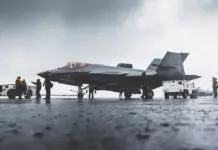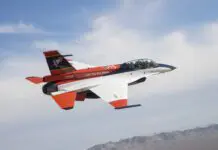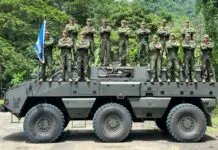In this new article, we will analyze the consequences of the decisions made by the current leadership of the Colombian state, Gustavo Petro, on the Colombian National Army. Just as was done regarding the Colombian Air Force, we will examine how these decisions and indecisions have led to a decrease in the capabilities of the National Army.
For the particular case, we will take into account each of the weapons and specialties available to the military entity, verifying the international implications of Gustavo Petro’s statements, the contracts signed within the current administration, and the lack of action by the ministry in modernizing, updating, and maintaining the force.
Army Aviation
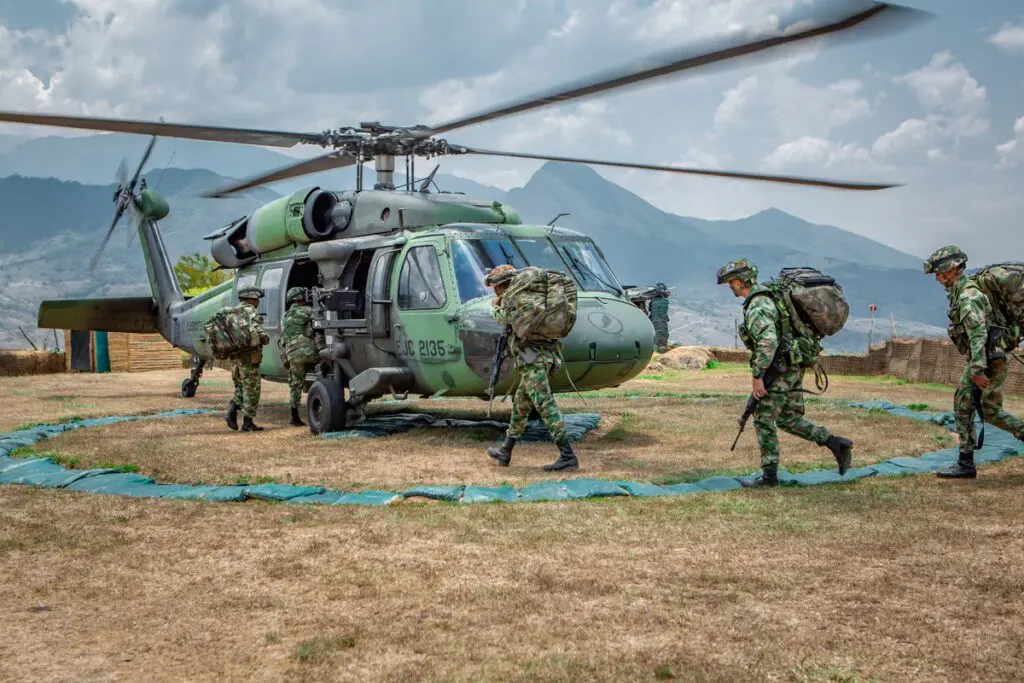
The Colombian Army has a large aerial and airborne capability, considered one of the best in the world. This capability is based on three types of helicopters: the Russian Mi-17, the UH-60 Black Hawk, and the UH-1H American. Of these, the case of the Mi-17 is particularly concerning, as half of the fleet is inactive and will remain in conservation status without flying in the short term. This is due to the Ministry of Defense’s inability to carry out maintenance contracts, as explained in the article published by this magazine. Despite this, and with a proposal for replacement by counterparts offered by the United States, this replacement is impossible due to President Petro’s political position, which blocks this possibility.
Furthermore, during this administration, no serious attempts have been made to obtain new donations or purchases of UH-60 or UH-1 for the National Army. There have been mentions of intentions for new UH-60s from the U.S. National Guard without any signed agreement. Regarding the UH-1U, the last units received with desert camouflage were acquired through donations processed by the previous government, with no effort made for new aircraft of this type to improve the aerial capacity of the Colombian Army.
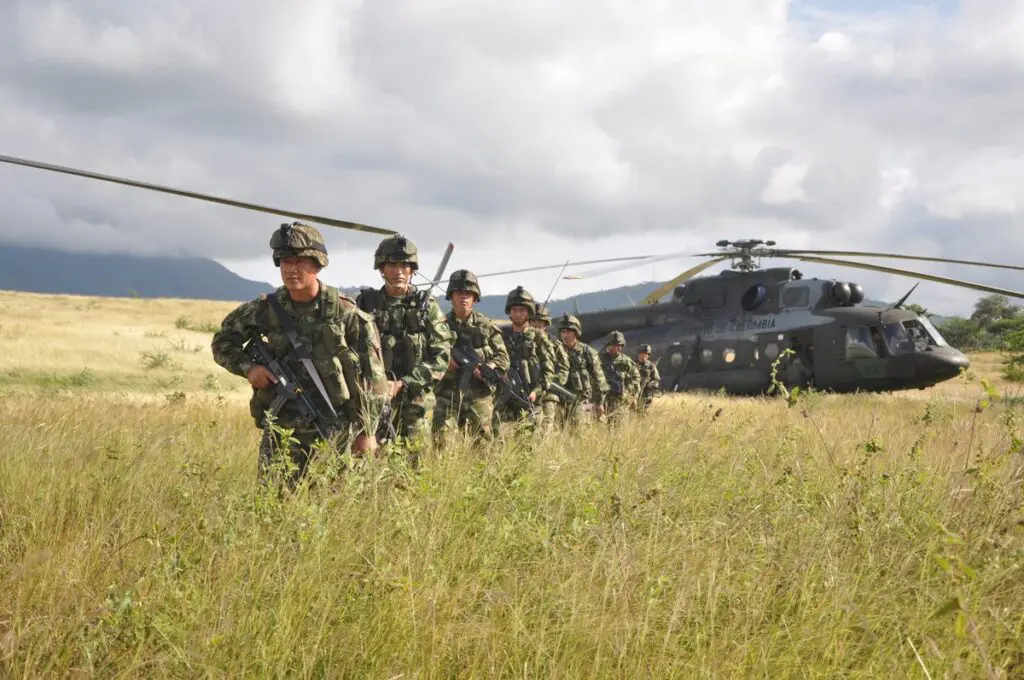
Today, we are left without half of the Mi-17 helicopters, which will likely lose their operational capability entirely. Additionally, no agreements have moved forward to acquire new UH-60 and UH-1H helicopters. It’s also important to note that maintenance of the latter through CIAC has been slowed down due to lack of budget. Despite CIAC’s capability, only a few units have been upgraded to the UH-1 Huey II level, demonstrating the company’s lack of resources for upgrades. This discredits the idea of creating technology and maintenance within Colombian defense companies, as touted in presidential speeches.
Cavalry
The Colombian Army’s cavalry has long relied on the 6×6 Cascavel and Urutu vehicles from the Brazilian manufacturer Engesa. However, recent commands and information circulated suggest that these vehicles will allegedly lose their operational capacity. This disregards the fact that Colombian Army maintenance battalions have the knowledge and capability to keep these vehicles active for the armored protection of our soldiers. Yet, absurdly, the commands have decided to abandon the maintenance of these vehicles, despite evidence from videos and press releases that have been available online for over 5 years.

The Urutu is a vehicle that requires maintenance primarily on its armor, bodywork, engine, and transmission, tasks that maintenance battalions have been carrying out for many years. However, these maintenance efforts seem to have been abandoned to facilitate their disuse, supposedly to justify the purchase of LAV IIIs. Nevertheless, the level of protection provided by the Urutu is crucial for safeguarding our soldiers, and due to its ease of maintenance, they should be kept in use by the Colombian Cavalry.
The same applies to the Cascavel, which, despite its outdated weapons system, remains a fundamental vehicle for protecting populations and roads in Colombia. The possibility of cannibalizing these 6×6 vehicles, which have similar spare parts and maintenance requirements, to maintain a smaller but operational fleet, has been ignored.
Another vehicle that has entered service in the cavalry is the M1117 Guardian, which is perfect for the country’s needs. 69 were purchased, three of which were damaged by terrorist attacks, although they have been restored by maintenance battalions. Additionally, 145 vehicles were obtained through donation in an agreement made during the previous government, with 59 more expected to arrive in the country soon, as announced by Zona Militar. Furthermore, 55 more have recently arrived which are undergoing inspection by officers and non-commissioned officers of the Casilda Zafra Maintenance Battalion, aiming to complete a fleet of 200 acquired through the Excess Defense Articles (EDA) program of the United States.
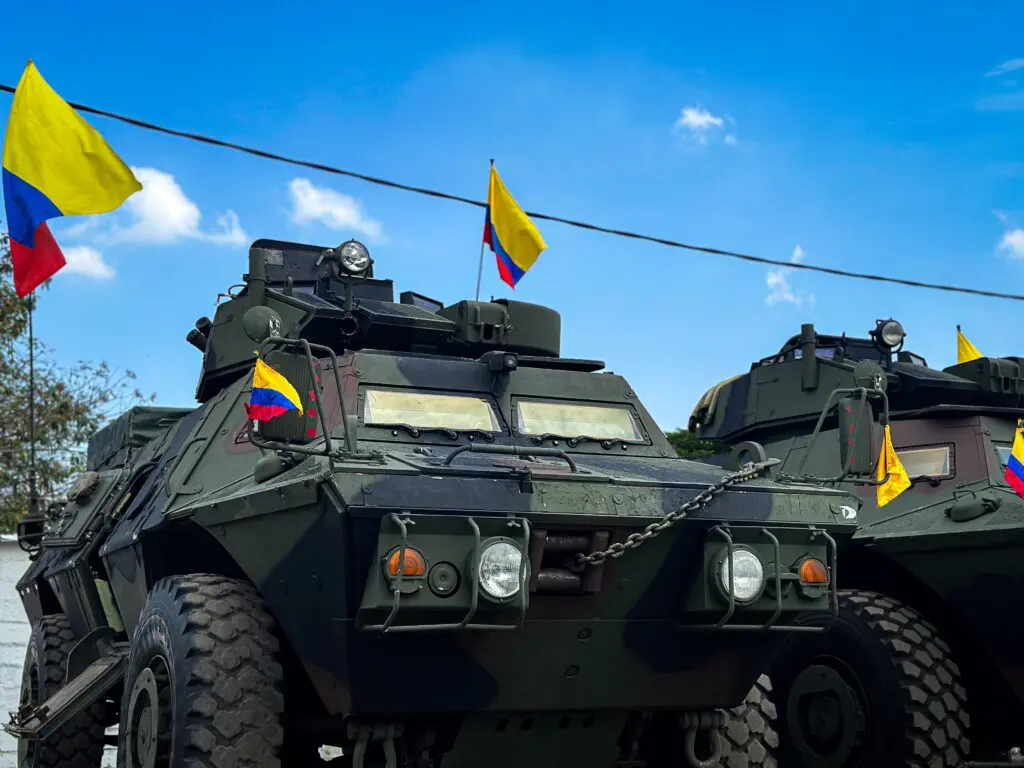
Apart from this, there is no intention of purchase for the Colombian cavalry, and misdirected future budgets (Compes) for armored vehicle purchases have only confirmed the acquisition of LAV IIIs at excessive costs for Mechanized Infantry. Due to the lack of vision from current politicians and commands, potential donations from other countries have been overlooked, and the acquisition of used vehicles for the Cavalry has not been considered, resulting in our main armored force being among the weakest in Latin America.
Infantry
Despite a significant budget of 305 million dollars being allocated to strengthen the Mechanized Infantry of the Colombian Army, this substantial budget will only procure 55 armored vehicles. This overlooks our capacity to have tracked vehicles, even the old M113s, which have demonstrated their capabilities in Colombian territory, especially in the northern border area and the Guajira desert. What’s even more absurd is that with values of 400 thousand dollars, Colombian infantry could be equipped with vehicles like the Hunter TR, Hunter XL, or the Titán, manufactured in Colombia, undermining the assertion from the Presidency that production and technological innovations should be generated from military companies to achieve self-sufficiency for the country.
So, while 305 million dollars are spent on just 55 vehicles, Colombian-made vehicles, which have the capability to safely transport our soldiers in departments such as Cauca, Putumayo, or Antioquia, where soldiers have died in ambushes in the past year, are acquired in a pitiful manner. Colombian developments that have demonstrated their capabilities are ignored, and they are not procured in sufficient numbers to protect our troops. In conclusion, with the cost of one LAV III, 11 transports made in Colombia could be acquired. In terms of numbers, while LAV IIIs can carry 10 people, the 11 Titans, if purchased, could safely transport 253 soldiers to Colombia’s conflict zones for the same cost.
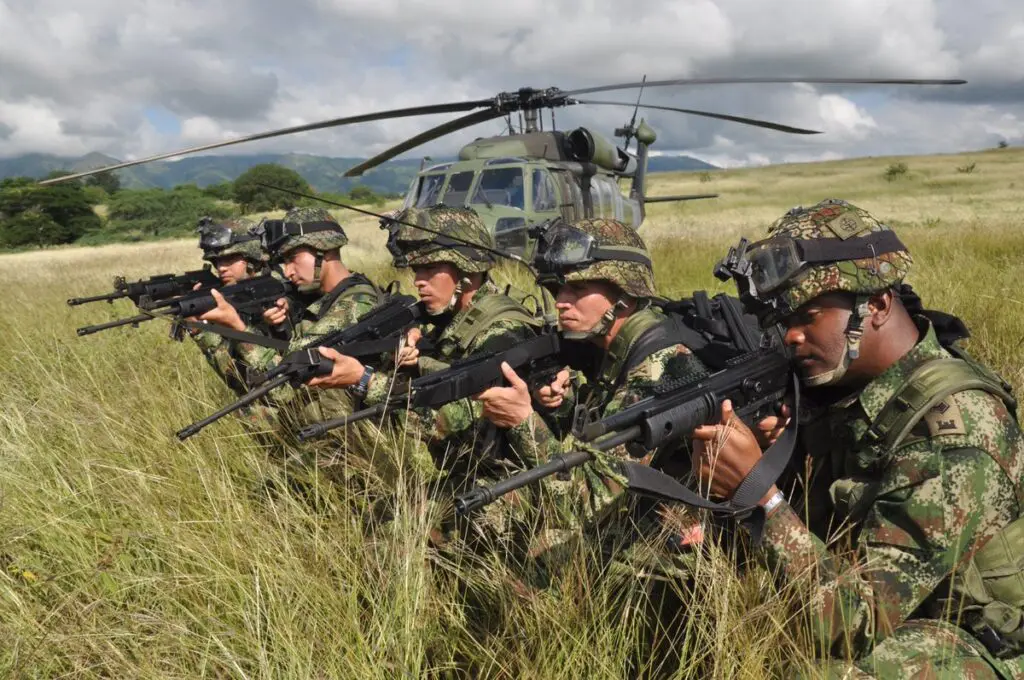
It is important to highlight that despite investigations by the media and the Attorney General’s Office, neither the Ministry of Defense nor the Presidency of the Republic have bothered to investigate this contract, which with such a budget could provide protection to Colombian soldiers against improvised explosive devices, gunfire, and ambushes by armed groups in which our men die every day.
Artillery
All specialists, military personnel, and defense experts support and emphasize the purchase of the Israeli-origin ATMOS self-propelled artillery system. Unfortunately, due to the President’s tactless and undiplomatic statements, this Israeli-origin system has been cast into doubt for our military forces. It is a practical solution at a reasonable cost for the modernization of our old and weak artillery, which, as mentioned in the article presented in Zona Militar, an artillery without cannons: the case of the Colombian Army, would lead to the modernization of this weapon.

Even more absurd is that when smaller caliber mortars of 80 millimeters manufactured by Indumil, which are produced in Colombia, are not acquired by the Colombian military forces in sufficient quantities. What’s worse is that there are no plans to acquire modern artillery systems such as rocket launchers, self-propelled mortars, or systems that increase such capacity.
METEOR SQUADRONS OR LIGHT CAVALRY BRIGADE
Some time ago, the Meteor battalions, which were responsible for the protection of Colombian infrastructure, were converted into Light Cavalry Battalions, a decision that is logical according to the developments in the organization of modern armies. However, the Ministry’s lack of understanding has not led to the purchase of domestically manufactured armored vehicles that could strengthen these battalions. Instead, they are left with only the option of acquiring a minimal number of Humvee-type vehicles, which are insufficient for the needs of these units.
As a result, efforts to acquire the necessary armored vehicles for the Light Cavalry Brigade have been halted due to our leaders’ failure to understand the development of counterinsurgency warfare in Colombia. They should learn from the experiences of the United States in Iraq and Afghanistan. Currently, defense groups for roads and infrastructure mobilize on motorcycles or in vans, which, as investigations by the media have shown, are contracted by the whim of the current general.
Anti-aircraft Systems
In modern warfare, it is necessary for all military forces to have the capability to operate anti-aircraft systems, a capability which the Colombian Army completely lacks. For years, the lessons seen in modern conflicts such as Ukraine have been ignored, where anti-aircraft capacity for troops deployed in the area is crucial.
The Colombian Army has no anti-aircraft potential against threats such as planes, helicopters, let alone guided ammunition or missiles that could affect national territory. There are no commitments or contracts that could improve the capabilities of our ground soldiers to obtain protection from an aerial attack. Only the Barak MX system was acquired for the Air Force, which is questionable due to the diplomatic differences between the current government and the state of Israel.
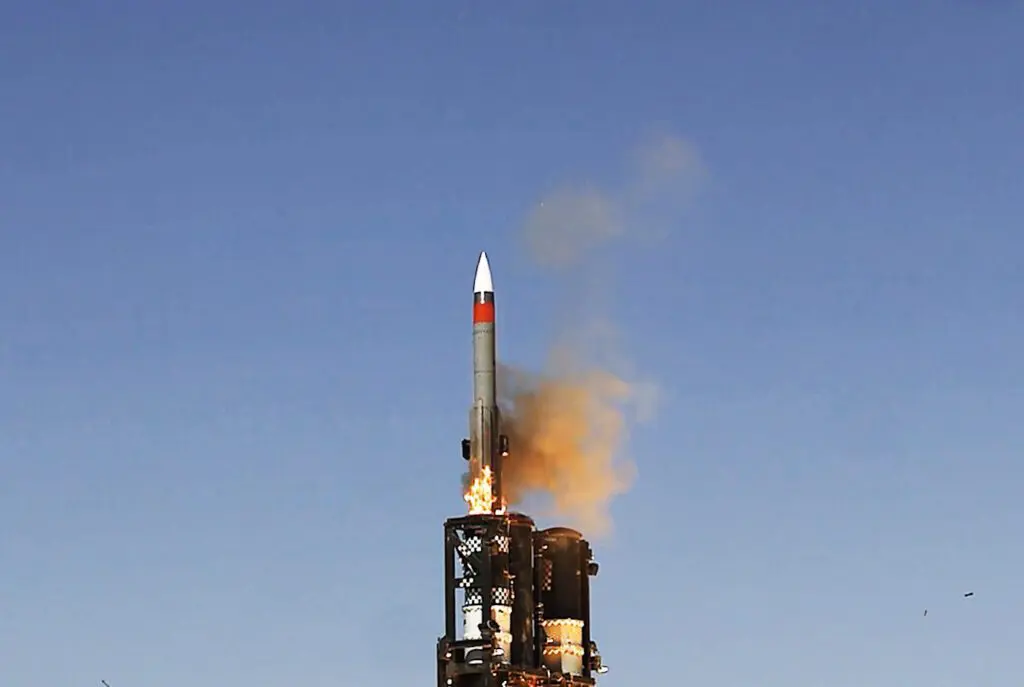
Apart from what has been said above, there is no anti-drone capability, which is even more terrible when we observe that insurgent groups are already using drones to attack troops, learning lessons from current warfare that high-ranking officials fail to perceive. It is incomprehensible that, despite CODALTEC having already developed an anti-drone system, this equipment has not been implemented by the National Army, considering that it is manufactured in Colombia and its development largely depends on contracts that all forces must provide to enhance ground troops’ capabilities to defend themselves against modern drone systems, which are currently seen as successful in conflicts such as Nagorno-Karabakh, Syria, and Ukraine.
In addition, there is no intention from commanding officers or responsible politicians to study the acquisition or search for donations in this regard, which will undoubtedly pose an unstoppable risk for soldiers in the area in the future.
Maintenance Capabilities
Although our soldiers have been able to maintain very old systems in acceptable numbers, as was the case with the Aimara seen on the roads of Casanare in 2022, the current government has shown no interest in strengthening the operational maintenance capabilities of our military forces. The best example is the loss of support for Engesa vehicles, which, despite being useful, have been sidelined due to administrative decisions.
However, it is worth noting that with the increase in M1117 vehicles, the Army has created new levels and maintenance capabilities for these armored vehicles, as well as for HUMVEEs and old M101 howitzers, which are the mainstay of Colombian artillery.
Conclusion
Therefore, the improvement of the Colombian Army and each of its branches has been thwarted: in aviation, by failing to seek solutions for sustainment and acquisitions; in terms of artillery, by President Petro’s statements; in Cavalry and Infantry, by the leadership’s inability to recognize the maintenance needs of many vehicles and by the lack of acquisition of those that would serve to protect soldiers built in Colombia, and by the astronomical spending on LAV IIIs. And finally, without efforts regarding anti-air assets or improvements in the possibility of technological exchanges for maintenance.
What’s worse is that there are no agreements with foreign governments for donations or acquisition of new elements that improve our Army’s capabilities, in addition to neglect in analyzing modern wars and the new challenges of counterinsurgency warfare, as seen in operations between Israel and Hezbollah or Hamas, which imply a new strategic thinking of the conflict and new tactics that will ultimately result in troop deaths.
Our minister, who travels every day to some place in the country, could hold security councils virtually, but he prefers to spend time on airplanes instead of worrying about the safety of our troops, and he fails to recognize that our heroes die every day in minefields and ambushes while large budgets are spent on expensive vehicles and vans that are not useful for the current Colombian conflict.
Additionally, neither the minister nor the president has been able to address clear reports of cost overruns and other acts detrimental to public property, given their lack of knowledge of military sciences and their incredible ignorance of developments in the new modern warfare, such as in cases like Syria, Iraq, Israel, Yemen, or Ukraine, where drones have become feasible and reliable killers, without understanding that our own soldiers are at risk against new weapon systems.
It has always been a criticism from this author of the generals’ and politicians’ inability to understand what it is like to be in an operational zone, where lives are at risk, and while our soldiers and police officers die, unfortunately, budgets are spent on officers’ vans in Colombian cities and on purchases that ultimately only weaken our military forces.
Honor, Discipline, and Victory. Motto of the Colombian National Army.
You may also like: The Colombian Army will proceed with the purchase of additional ASV M1117 vehicles from the United States






